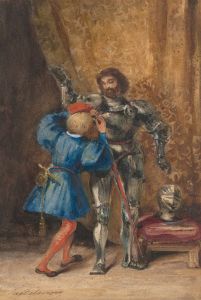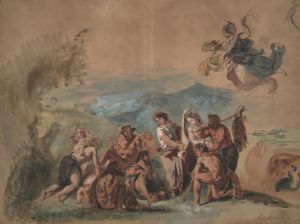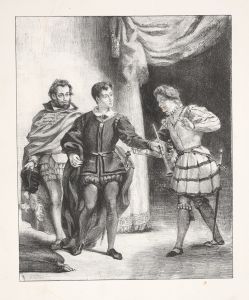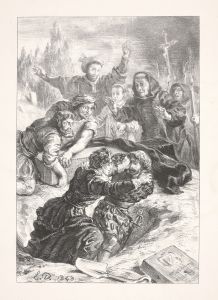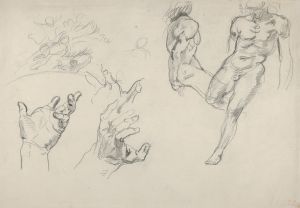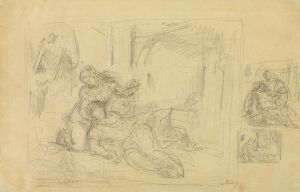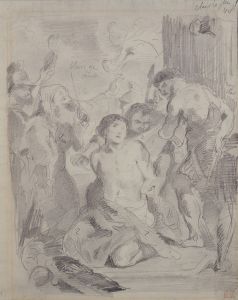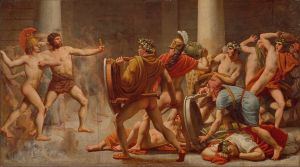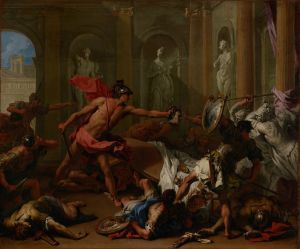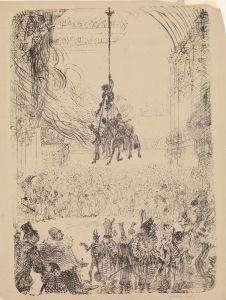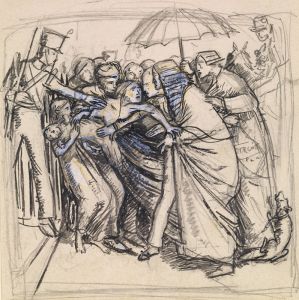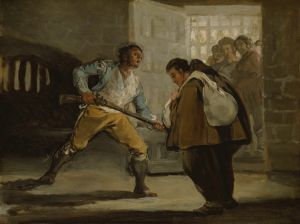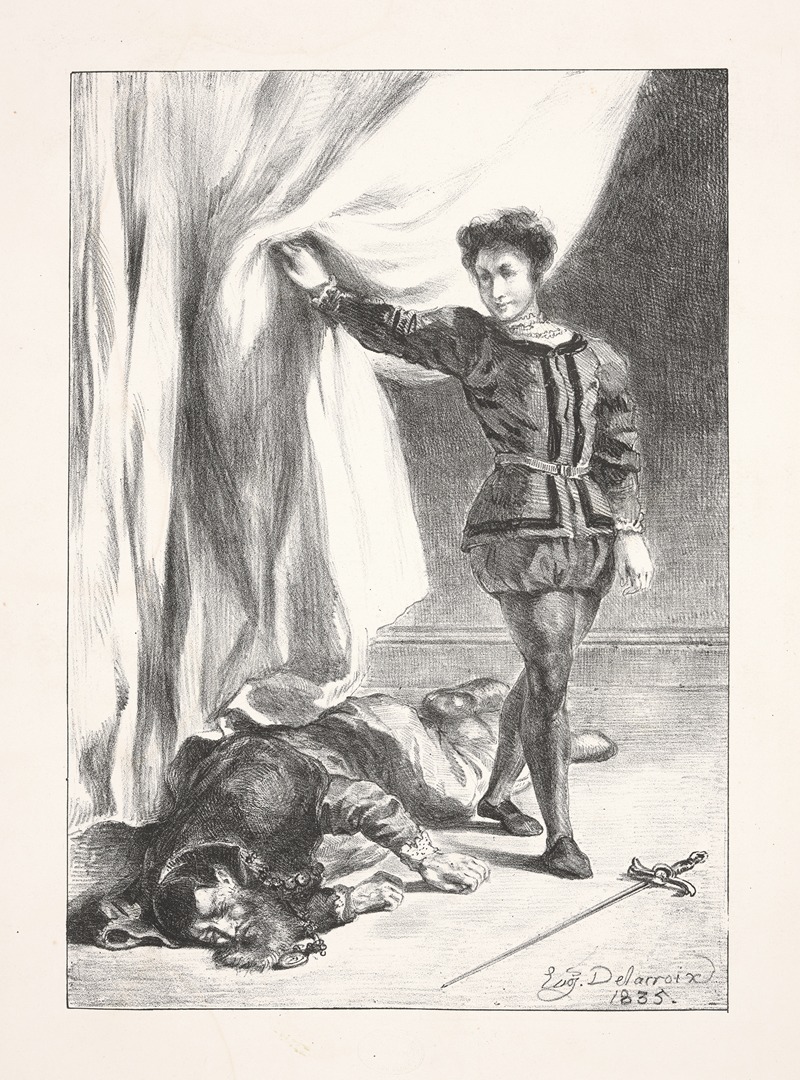
Hamlet and the body of Polonius
A hand-painted replica of Eugène Delacroix’s masterpiece Hamlet and the body of Polonius, meticulously crafted by professional artists to capture the true essence of the original. Each piece is created with museum-quality canvas and rare mineral pigments, carefully painted by experienced artists with delicate brushstrokes and rich, layered colors to perfectly recreate the texture of the original artwork. Unlike machine-printed reproductions, this hand-painted version brings the painting to life, infused with the artist’s emotions and skill in every stroke. Whether for personal collection or home decoration, it instantly elevates the artistic atmosphere of any space.
"Hamlet and the Body of Polonius" is a painting by the renowned French Romantic artist Eugène Delacroix. Created in 1834, this work is one of Delacroix's many pieces inspired by the plays of William Shakespeare, particularly "Hamlet," which has been a rich source of inspiration for artists across various mediums.
Eugène Delacroix (1798-1863) was a leading figure in the Romantic movement, known for his expressive brushstrokes, vibrant color palette, and dramatic compositions. His works often depicted scenes of intense emotion and dynamic action, characteristics that are evident in "Hamlet and the Body of Polonius."
The painting captures a pivotal moment from Act III, Scene IV of Shakespeare's tragedy "Hamlet." In this scene, Prince Hamlet confronts his mother, Queen Gertrude, in her chamber. During their heated exchange, Hamlet hears a noise behind the arras (a tapestry or curtain) and, believing it to be his treacherous uncle King Claudius, stabs through the fabric, only to discover that he has killed Polonius, the father of Ophelia and Laertes, who was eavesdropping on their conversation.
Delacroix's depiction of this moment is charged with tension and drama. Hamlet stands over the lifeless body of Polonius, his face a mixture of shock, realization, and determination. The composition is carefully arranged to highlight the emotional intensity of the scene. Hamlet's posture and expression convey his inner turmoil and the gravity of his actions. The body of Polonius lies sprawled on the floor, partially covered by the arras, emphasizing the suddenness and violence of his death.
The use of light and shadow in the painting enhances the dramatic effect. Delacroix employs a rich, dark palette with deep reds, browns, and blacks, creating a somber and foreboding atmosphere. The light source, presumably from a nearby candle or lamp, casts stark shadows that add to the sense of unease and highlight the key elements of the scene.
Delacroix's interest in Shakespeare's works was part of a broader fascination with literature and history that characterized much of his oeuvre. He believed that the emotional depth and complex characters of Shakespeare's plays provided fertile ground for artistic exploration. "Hamlet and the Body of Polonius" is a testament to Delacroix's ability to translate literary drama into visual form, capturing the essence of the characters and the intensity of the narrative.
This painting is part of a series of works by Delacroix based on "Hamlet." His engagement with the play extended beyond painting; he also created a series of lithographs illustrating various scenes from the tragedy. These works collectively demonstrate Delacroix's deep appreciation for Shakespeare's genius and his skill in conveying the psychological and emotional dimensions of the Bard's characters.
"Hamlet and the Body of Polonius" is housed in the Musée du Louvre in Paris, where it continues to be admired for its artistic mastery and its powerful depiction of one of Shakespeare's most famous scenes. Delacroix's interpretation of this moment in "Hamlet" remains a significant example of the intersection between literature and visual art, showcasing the enduring influence of Shakespeare's work on the Romantic imagination.







